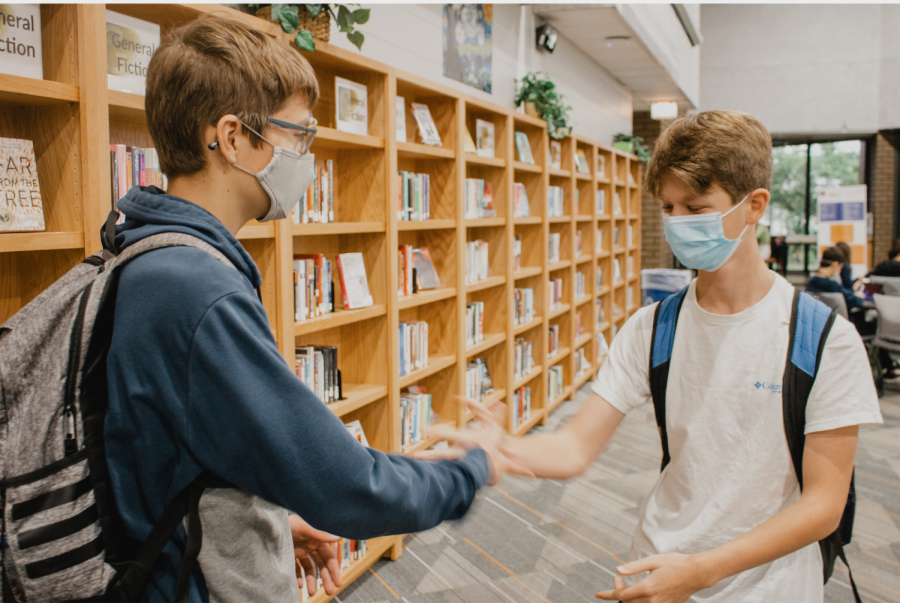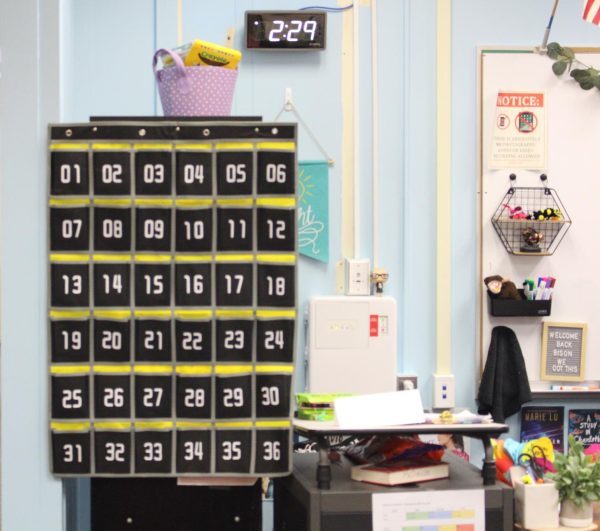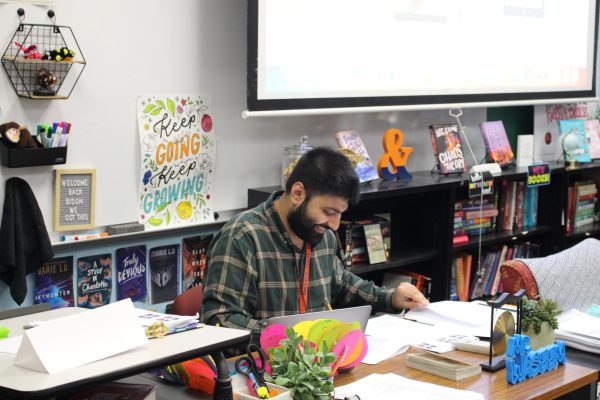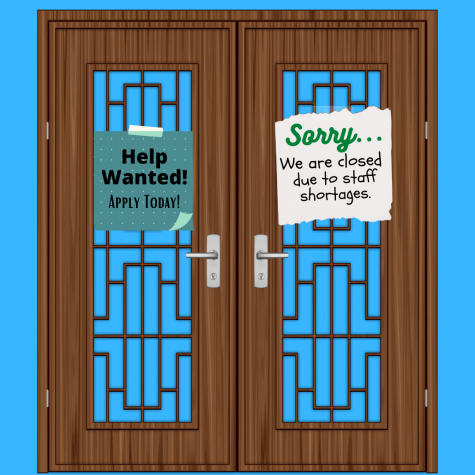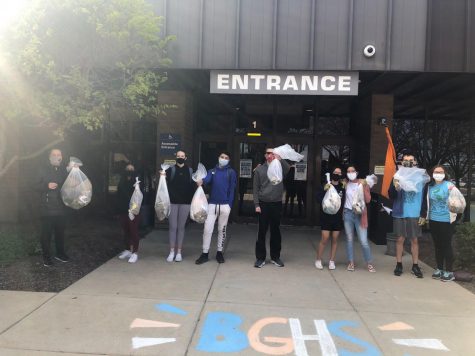Breaking Down the Block: Students and staff adapt to the two year block pilot
Sophomores Simon Czeryba and Jack Greenspan meet in the library during study hall to work on homework.
The past two years of Pandemic education may have forever changed the schedule at BG. During remote learning District 214 ran on a modified block schedule. In order to maintain some consistency, the district surveyed staff, students, and parents to determine if the majority of stakeholders wanted to continue with this type of schedule. Votes revealed a desire to continue and we are currently in year one of a two year block schedule pilot.
One third of our student body have not experienced a full normal school year at BG, leaving only the class of 2022 to provide insight on what school was like pre-COVID. According to “Having to do the same classes everyday would get so repetitive, I like how they change.” — freshman Shirin Ganeshan
Having four periods every other day also means having two days to complete any homework assignments, which can be very beneficial for students. According to Ganeshan, she thinks students can really use this to have better time management. One of the drawbacks, however, is less of an opportunity to form new friendships and see current friends.
“I only have one class with my friends, but they all have classes with each other,” Ganeshan said
This would still be an issue with the old schedule yet it has a greater impact since this one period with friends occurs every other day. Switching back to the old schedule may be an option as this is still a pilot, yet according to Ganeshan she is accustomed to this schedule now and is using it to make her a better student.
The switch to a block schedule has, however, also introduced a multitude of conflicts, some that have not even come to light yet. Honors and AP math teacher Bihn Huynh, notes multiple concerns whether it be the change in curriculum or imbalances it has created. Having class for 80 minutes every other day means that the amount students are learning has decreased significantly.
According to Huyn, 25 ⅓ hours of class time has been lost, along with 50% of face time with students, creating a 17.6% decrease in instruction time compared to the previous schedule.
A concern would be that AP and dual credit classes that are participating in the block schedule could result in a lower performance on these high stake exams.
“The AP test won’t change, but how instruction time we have with students will,” Huynh said.
In addition to the change in what students learn, how students learn has also been greatly affected. Teachers must find a common ground between the work load distributed, efficiency to compensate for lost class time, effective lessons, and useful downtime to allow students a break during their long periods. According to Huynh as a math teacher, he feels as though skill based courses such as math and foreign language may respond differently to the block schedule than say a history or language arts class.
“Students are still going to sports, band, orchestra, everyday in order to practice and tone their skills. Likewise math is a subject that you have to practice skills constantly and train yourself to understand, but the block schedule makes this difficult,” Huynh said.
The main reason for the block schedule is to help with contact tracing. When a student has COVID-19, everyone they have come within three feet of at school is at risk.
“Contact tracing goes back two days prior to when symptoms are shown, so a block schedule means only tracing eight blocks opposed to sixteen,” Associate Principal Robert Hartwig said.
This means that less people are at risk of COVID and it is easier for administrators to trace the virus. The block schedule has also allowed for every student to have a study hall and many students to go off campus. Faculty does not conduct contact tracing when students are outside.
“We are giving students the opportunity to be responsible,” Hartwig said. “What they do with this opportunity is up to them but I believe that a lot of students are using it to their advantage.”
By switching to the block schedule, students learn how to manage their time, stay on top of work, and be responsible. In addition, the block schedule may not result in that much curriculum lost. One class in the block schedule loses eight minutes for every two classes in the old schedule. Although relationships with students and staff may be a bit more difficult to form given that they only see each other every other day, it is still possible.
“People become teachers to help kids. Seeing their students less won’t change that,” Hartwig said.
The block schedule has affected everyone in the building. Students, teachers, and other faculty members continue to learn from this new schedule and each other. As long as schools continue to adapt, it seems we can make anything work.
“Everyone is going through the same thing with the schedule, it’s a matter of who is using it to be better,” Hartwig said.

